Automotive Glass Antenna Simulation
Introduction
The rapid increase in the number of integrated glass antennas strengthens demands for electromagnetic compatibility (EMC) of such antennas to each other, vehicle wiring, electric equipment and the body of the vehicle itself.
For effective simulation of complex automotive glass antennas EMC Studio / EMCoS Antenna VLab provides special tools for full modeling chain:
- Advanced tools for glass antenna importing from native CAD formats and pre processing of initial data in order to obtain good computational model
- Special computational method for glass antenna analysis
Computational method for glass antenna analysis is based on hybridization of MoM solution for 3D metall-dielectric objects (car body, wiring) with Green function approach for metallic stripes, printed on multi-layered dielectric substrate with small curvature.
![]()
Simulation Model Description
In this application note complex glass antenna in car rear window located above real ground is considered. Glass thickness is 3.14 mm, permittivity 7.5. For modeling of BNC connector at antenna port non-radiating transmission line element is used. Frequency range:1 MHz – 300 MHz. Simulation results are compared with measurements.
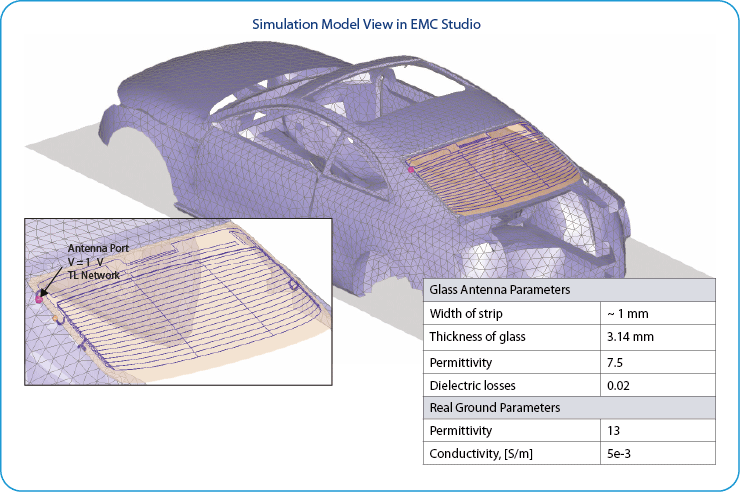
Results
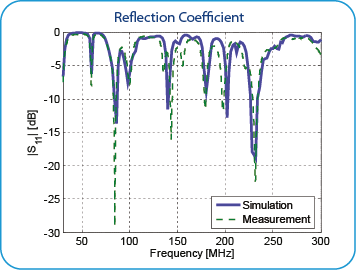
The comparison of simulation and measurement results is demonstrated. There is good agreement between measurement and simulation results in considered frequency range.
Measurements were performed in AUDI AG, Germany.
Far field radiation pattern calculated above real ground is shown below for some selected frequencies:
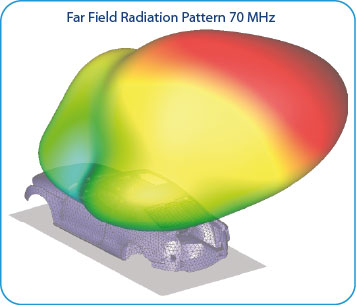
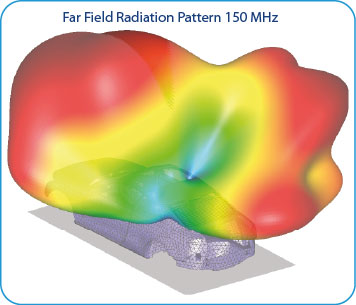
Total electric field distribution is shown below for some selected frequencies:
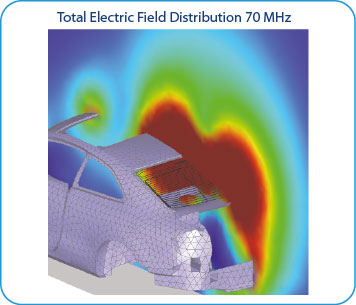
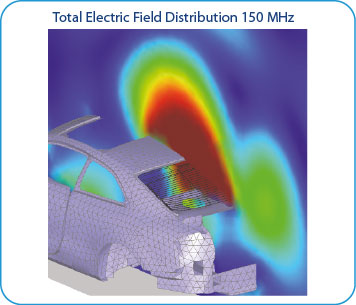
Conclusions
According to performed investigation the main conclusions are:
- Computational model of automotive glass antennas can be effectively generated using EMC Studio / EMCoS Antenna VLab advanced CAD tools
- Simulation results for complex glass antennas integrated in car body are in good agreement with measurement results

